By: Mahira Rodoshee & Yayun Lai
With consumers placing more focus on the environmental effect of the product, it’s dawning on more companies that sustainability storytelling will soon or later become indispensable in their marketing strategy.
The shift in mindset is especially evident among the young audience. According to a survey by Sustainable Investment Group, 73% of Generation Z has shown a higher willingness to pay for sustainable products. The survey from Global Web Index reveals the importance of green credentials of eco-friendly products in the eyes of millennials. 61% of them show an inclination to pay more for sustainable products.
Companies are expected to take a stand on critical issues such as climate change, driven by the demand of consumers and investors. Pivoting to a sustainable pathway is often a value-added process to the business if purpose and action go hand in hand and stay coherent.
A recent report by Accenture has pointed out that companies with high environmental, social, and governance performance have outperformed achieved 3.7 times higher operating margins, and generating 2.6 times higher shareholder returns than their counterparts.
The purpose of a green transformation should be well-defined and aligned with companies’ actual ESG efforts. Once plans are put into practice, marketing platforms such as Twitter, Facebook, and LinkedIn then become crucial tools for the company to deliver the green messages and build trust with its customers.
Gaining a Competitive Edge Through Sustainable Communication
Companies are now communicating their sustainable plans, products, or green milestones with their audience through digital marketing.
The annual Social Media Sustainability Index report by Sustainly has looked into how companies leveraging their social media platforms to spread the green message. To assess the performance of companies’ sustainability communication, the index also gives weight to the authenticity and credibility of the storytelling as a way to exclude those companies who have no action on words.
“Good social media communications is based on having a compelling story to tell and being able to back it up.”

Based on an analysis of selective companies, Twitter and LinkedIn are the two leading social media channels through which the company communicates sustainability with its followers. Among the top 100 companies, 20 belong to the industrial sector followed by 13 in the consumer goods sector.
GENERAL ELECTRIC had ranked 1st on the index in the year 2015. As a technology and services company, it has shown great commitment to the launch of Ecomagination. Through the corporate LinkedIn profile, GE has been actively sharing sustainability-conscious posts highlighting its efforts in energy transformation, green technology, and engineer diversity.

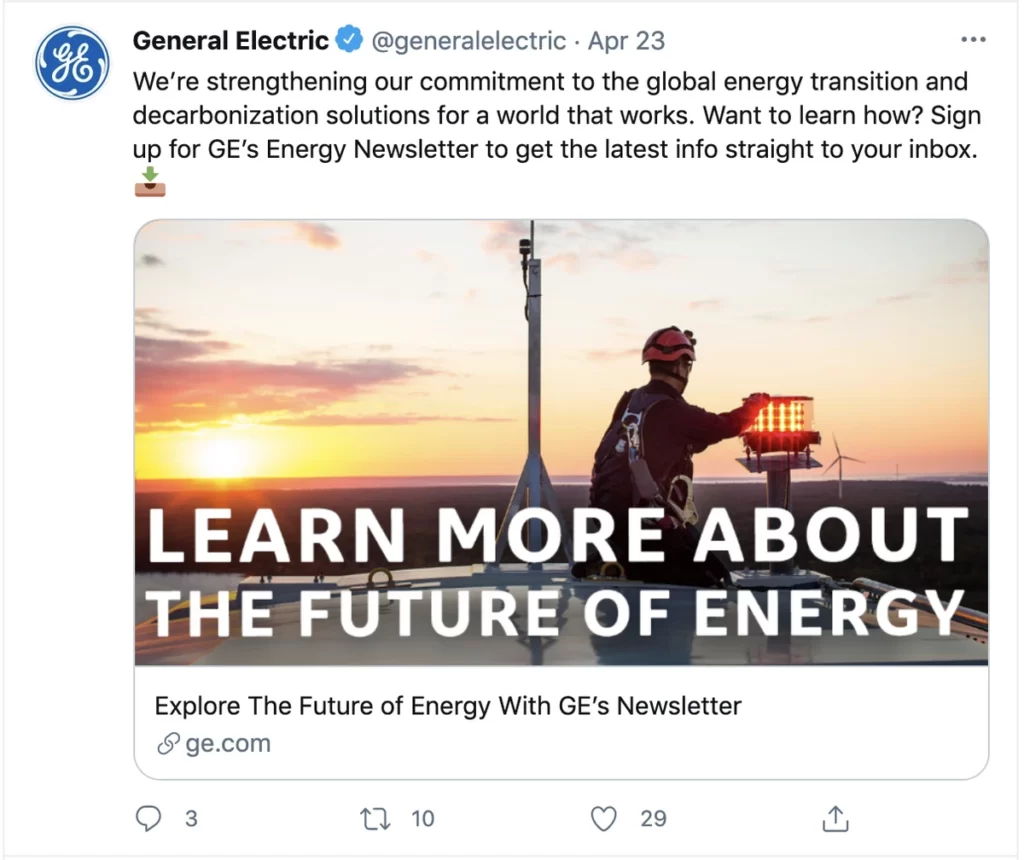
It’s also interesting to see how the themes of green marketing vary among different sectors.
Consumer goods companies tend to create sustainability stories drawing on their product traits and target audience. Dove, a personal care brand has used its social media as the major channel to promote its #DoveSelfEsteemProject.

“Dove believes all women should be able to present themselves as they choose without feeling pressure to meet unachievable beauty standards.” On Twitter, it has been actively advocating woman power and fighting against digital distortion and gender discrimination.
On a recent Twitter post, Nestlé announced the carbon-neutral goal of its brand KitKat, claiming to reduce carbon emission in sourcing ingredients, manufacturing, and distribution by 2025. As one of the largest food & beverage companies, Nestlé also underlines the group’s commitment to addressing environmental problems using hashtags. It celebrates key events such as #EarthDay, to voice its climate change efforts, and #StopFoodWasteDay to emphasize how it addresses food waste.
The concept of sustainability has become a global concern in the fashion industry. The attitude of environmentally conscious consumers towards the fast fashion industry is negative due to the fashion industry’s disastrous impact on the environment. This growing concern towards sustainability has prompted the founding of several global sustainability campaigns in recent years.
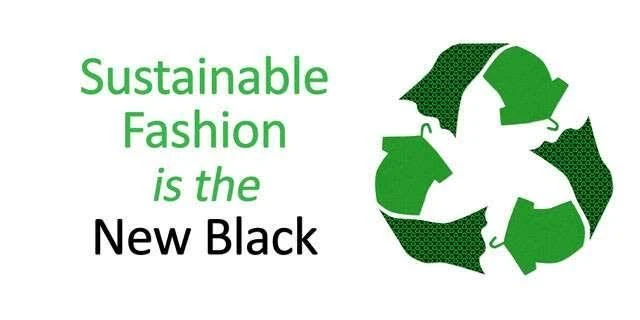
Social media also plays a significant role to promote ethical clothing. It allows interaction between consumers and brands through which the interests of consumers can be captured. Sustainable fashion brands utilize social media to alert consumers regarding their choices through sharing stories or campaigns. A few examples of fashion companies are given below that have captured the attention of consumers towards their promotion of sustainability through social media.
Helpsy is an ethical commerce brand that sells products that are trendy as well as eco-friendly. This brand uses social media platforms as a basis of its marketing. Through using the tagline ‘ethical fashion that’s dope’ the brand aims to capture the attention of young consumers.
Los Angeles-based brand Reformation used the tagline ‘Being naked is the most sustainable option. We are #2′, to set a new standard of marketing sustainable clothing. They launched in 2009 with this message to deliver a unique way to promote sustainable clothing. With the help of Refscale, an ingenious tool, the brand lists down CO2, water, and waste savings for every product sold on the Reformation site.
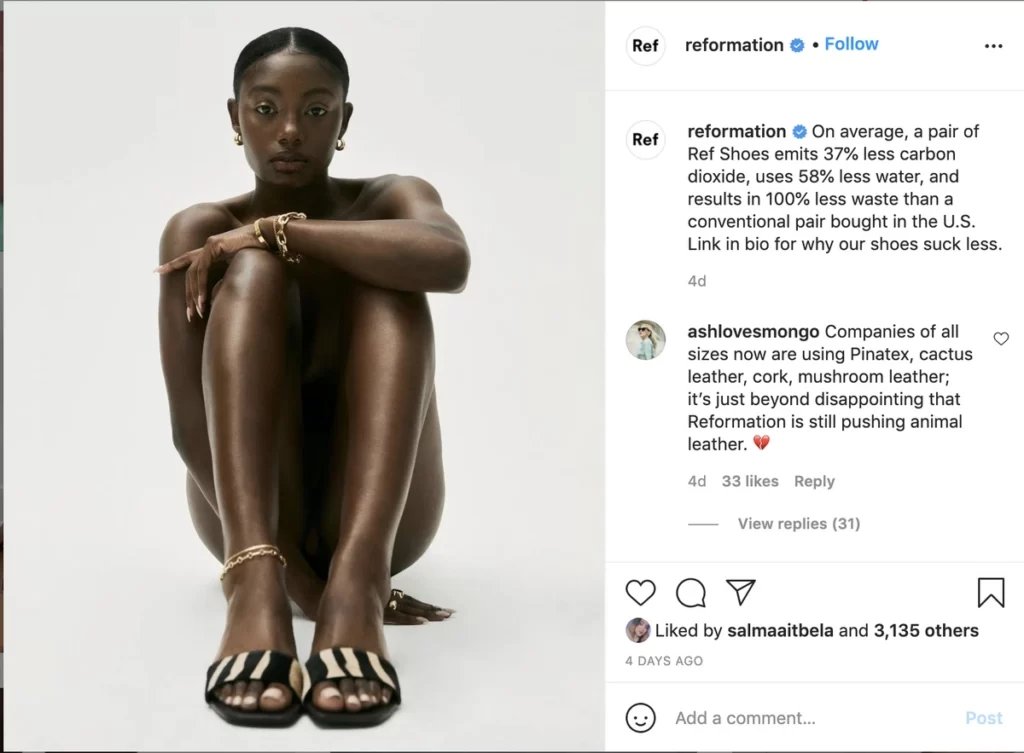
Meanwhile, influencers on Instagram or other social media play a significant role in the marketing strategy to draw the attention of consumers towards ethical clothing. As influencer marketing is becoming a modern way to stimulate word-of-mouth effects, sustainable fashion brands have been collaborated with sustainability-conscious influencers to promote their products.
The other side of the coin
However, the term Greenwashing is created to denote the downside of green marketing where, according to the definition given by Corpwatch, socially and environmentally destructive corporations attempting to preserve and expand their markets by posing as friends of the environment and leaders in the struggle to eradicate poverty.
The gesture of green marketing can be futile and oftentimes condemnable if followed without concrete efforts in optimizing the product line or sustainable strategies which should be coherent to the company’s claims. Some companies try to project themselves as vanguards of green initiatives to likable image, but only to be found as a master of showy movements and specious promises when the truth is unmasked.
A report recently conducted by Context has ranked companies based on their sustainable content on social media. BP, the British multinational oil and gas company that has put carbon reduction at the central place of its sustainability-related posts, topped the list.
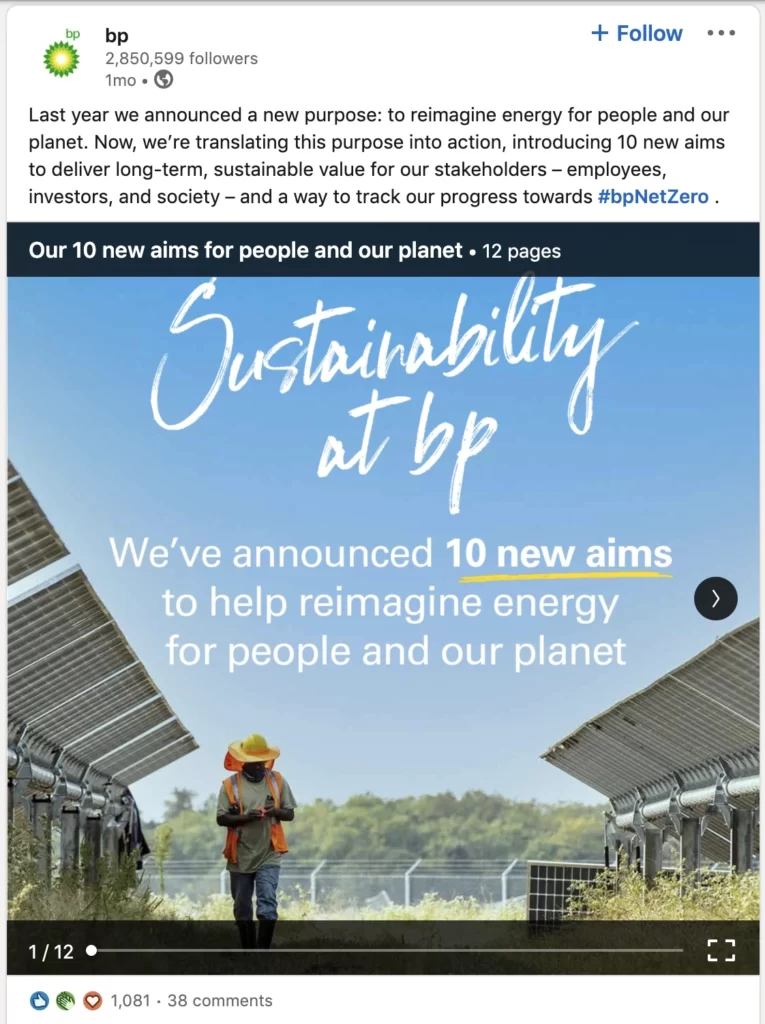
For oil companies, however, a green image on social media doesn’t always receive a warm welcome from the public but rather triggers skepticism. In 2019, environmental lawyers from ClientEarth condemned BP’s extensive marketing strategy as greenwashing.
BP was criticized to preach a renewables transformation while still invested massively in oil and gas (96% of its annual budget). Reports from InfluenceMap indicated that 5 leading oil companies had spent more than $1 billion on marketing their climate credentials while lobbying to protect and expand their fossil fuel operation.
In response to the abovementioned accusation, BP reemphasized its commitment to low-carbon emission, “One of the purposes of this advertising campaign is to let people know about some of the possibilities we see to do that — for example in wind, solar and electric vehicle charging, as well as in natural gas and advanced fuels.”
Even the fast fashion brands got accused of greenwashing. The world’s 2nd largest fashion retailer, H&M has been reported for misleading consumers by failing to provide adequate detail about why their garments are less polluting than other garments.
H&M has been accused of greenwashing due to its plans to start making clothes from Circulose, a sustainable fabric made from up-cycled clothing and fashion waste. Anti-fast fashion campaigner Venetia la Manna argued that though Circulose is a sustainable fabric but introducing new material to the consumers will increase the amount of textile waste. The sheer amount of products produced by H&M is ruining the efforts of sustainability marketing resulting in causing harm to both the planet and people.
In addition, H&M does not provide detailed information regarding materials. H&M claims that the clothes of its brand “Conscious Collection” are made with sustainable materials. But as they do not provide detailed information regarding their materials so it is fair to say that the brand is misleading its consumers.
In response to this act of misleading, Climate rebels from Extinction Rebellion campaigned on Sunday at the branch of clothing giant H&M on the Rokin in Amsterdam. The Climate Action Group states:
“The company simultaneously produces more ‘fast fashion every 24 hours than it could recycle in twelve years. The Conscious Collection is a drop in an ocean… a maximum of 20% sustainable cotton is used, and the information about it is largely insufficient.”
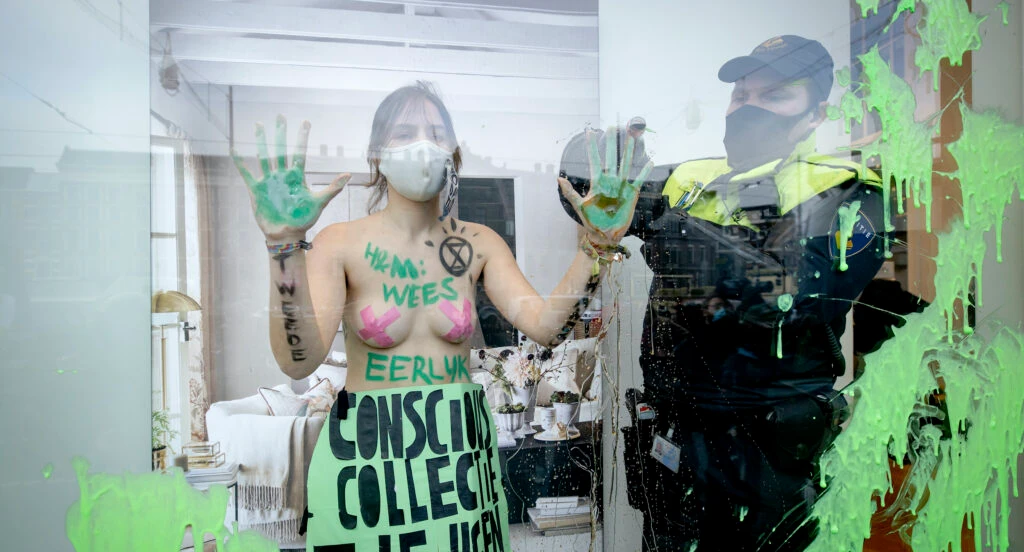
There is no doubt that the backlash from the environmentalists highlighted the negative effects of misleading green marketing both to customers and companies. Disguised greenwashing may trick customers to buy products that do no good to the environment while exaggerated publicity could backfire on companies’ reputation and growth.
It is a matter of disgrace that there are some brands like IKEA, Green Diesel, etc. that have taken the advantage of the pandemic to promote their products. Being pretentious regarding caring about the planet and people in this pandemic, the companies have tried to sell more products just merely claiming their products as sustainable on social media platforms.
There is nothing unmixed blessings on the earth. Digital sustainability marketing can create scope to promote sustainability in its truest sense. At the same time, social media platforms can be used as a tool to mislead consumers. Consumers should be conscious of protecting the environment while choosing the product instead of getting carried away with the trends.


